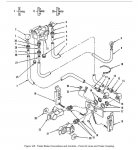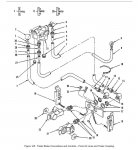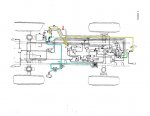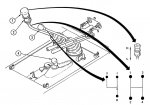rtrask
Active member
- 332
- 220
- 43
- Location
- San Luis Valley, Colorado
The good news is the mog is again building air pressure. The bad news is that other than replacing the head gasket on the compressor (which I am no longer confident was the issue), I changed nothing and I am confident that there are other issues.
Perhaps it is just my reluctance for taking yes for an answer, but I have a sneaking suspicion the problem will recur.
Here are some possibilities.
Who knows? Maybe it was more than one / a combination of things.
Some other observations:
If anyone has any data on how long it takes their system to build and drop pressure I would love to hear what your mog does. I do not think there is any problem with the compressor piston, rings, or the cylinder liner. I think I may order a kit that includes new valves. Cost of the kit is < 18$ US. I have posted additional info on this link https://www.steelsoldiers.com/showt...ference-XREF&p=2203046&viewfull=1#post2203046
Perhaps it is just my reluctance for taking yes for an answer, but I have a sneaking suspicion the problem will recur.
Here are some possibilities.
- Replacing the head gasket on the mog compressor. (The reason I doubt this is that the pressure measured by a finger over the output line did not seem any better.) I think it is still possible that when the pressure got higher than little dutch boy sticking his finger in the dike it started leaking at the compressor gasket. if that were the case however, I think there would have been at least some pressure in the tanks.
- Charging the system from my shop compressor / quickly releasing that pressure by disconnecting the hose knocked whatever was blocking the pressure from getting to the tanks loose. ( The reason I doubt this is that in my first go round on this back in December, I did not find anything blocking pressure from the compressor to the jumble of connections at the tanks, and after I completed that process, there was still no air getting to the tanks. )
- Happy accident. While I had the shop compressor connected to the water drain valve, I noticed that air was leaking from the alcohol injector. I had a feeling at the time that perhaps this was due to pressure being introduced from the wrong side, but I had started up the mog, and at some point I heard that happy whoosh sound and a snap similar to when a tubeless tire seats but softer, and the air stopped leaking at the alcohol injector. My thought on that was that the pressure from the mog got higher than the pressure from the shop compressor and pushed one of the little rubber "O" rings into place. ( The reason I don't think it was this is that, is that this all started prior to me ever touching the alcohol injector.
Who knows? Maybe it was more than one / a combination of things.
Some other observations:
- The primary air circuit, and the trailer air circuit have one way valves which allow them to hold pressure independent of each other. I was able to install my compressor connection plug in each tank, and no air ever got into the supply circuit or the other tank.
- By sticking my compressor plug fitting into the drain valve I was able to fill both systems easily, but could hear no leaks except the one by the alcohol injector. (I missed that water drain valve when I replaced the ones in the tanks. and I am ordering a new one.
- There is no missing line that goes from the front glad hands back. When I looked in the parts catalog it only shows the line going to the booster. It is a smaller diameter line than I would have thought, but I don't think anything is missing.
- The trailer brake lines, what is there and what is missing is still a mystery to me, but at this point my care level is too low to resolve it.
- TM 5-2420-224-34 has the best information on working on the compressor. Student handbook is probably the clearest on describing the routing of the air lines of the two systems, and subsystem of the primary circuits
- I did not time how long it takes to get from zero pressure up to 105 PSI which is where it stops building for me, but I did time how long it take to get from 60 PSI to 105 PSI, and it took about 6 minutes.
- When at 105 PSI, it takes about 15 minutes for the pressure to drop down to 60 PSI.
If anyone has any data on how long it takes their system to build and drop pressure I would love to hear what your mog does. I do not think there is any problem with the compressor piston, rings, or the cylinder liner. I think I may order a kit that includes new valves. Cost of the kit is < 18$ US. I have posted additional info on this link https://www.steelsoldiers.com/showt...ference-XREF&p=2203046&viewfull=1#post2203046
Last edited:








